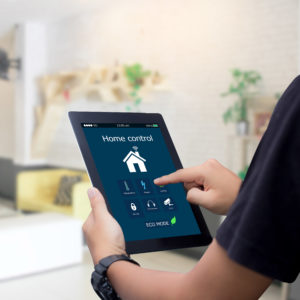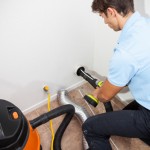 As buildings become more energy efficient, the design of components like wall caps and roof vents have been modified to protect the rainscreen. The biggest change recently, however, has been in the area of home automation. Voice-enabled technology is the latest wave and understanding how to deliver it to your customers can make you their technician of choice.
As buildings become more energy efficient, the design of components like wall caps and roof vents have been modified to protect the rainscreen. The biggest change recently, however, has been in the area of home automation. Voice-enabled technology is the latest wave and understanding how to deliver it to your customers can make you their technician of choice.
This new trend is mostly thanks to the popularity of voice-enabled personal assistants like Amazon Echo’s Alexa and the Google Home Assistant. The newest arrival to the personal assistant market is the Apple Homepod.
Amazon’s Echo, Google Home, and Apple’s HomePod act as hubs for the smart home, integrating with numerous devices, including smart thermostats. With any of these systems, your customers can use natural voice commands to request changes to their HVAC delivery.
Automation in HVAC has been around for decades, of course, but the popularity of voice assistants promises to change the industry. With a voice-activated assistant, your customers can create custom commands. For example, “workout” can be a request to turn the heat down for an hour. According to Nick Kostora, writing for achrnews.com, HVAC manufacturers are paying attention to this trend.
Nexia, an Ingersoll Rand company, has integrated its smart thermostat with Amazon Echo. In an interview with Kostora, Nexia general manager George Land said: “If you have a smart home and you have smart devices, the ability to speak naturally and adjust those things is really a powerful way to interact with those devices. It was a no-brainer for us to integrate with the Echo.”
Honeywell is integrating with as many smart home systems as it can, including HomePod, Amazon Echo, and Google Home. They recently launched a voice-controlled thermostat.
LG announced that its variable refrigerant flow units are now compatible with Google Home and Amazon Echo. Lennox recently announced that the iComfort S30 and EcoSmart thermostats are compatible with Apple’s HomeKit and can be voice activated with any Apple device. These thermostats were already Alexa-enabled.
To take advantage of the convenience of voice activation for HVAC, your customers potentially need two things: a voice-activated assistant and a smart thermostat. And they need the assistant and the thermostat to be compatible.
Integrating voice-activated HVAC
Customers who prefer Alexa have a lot of options including:
• iDevice
• Ecobee thermostat
• Honeywell Wi-Fi 9000 7-Day Programmable Thermostat
• Honeywell Lyra T5 7 Day Programmable Thermostat
• Nest thermostat
The iDevice also works directly with an iPhone’s Siri assistant, saving your customers from needing a separate smart home hub.
The Ecobee thermostat works only with Alexa for voice control, but it works with multiple data input, such as the home’s energy profile and the weather and includes sensors that identify when occupants are home.
The Honeywell 9000 Smart Thermostat is EnergyStar certified, and it has voice control built in – there is no need for your customers to purchase an additional voice assistant.
Honeywell’s Lyra T5 thermostat works with Siri for voice control. It comes with push alerts that let your customers know when they need to change a filter or if they can expect extreme weather.
The Nest smart thermostat was the first smart thermostat to earn EnergyStar certification. Nest works with Google Home and the HomePod as well.
Regardless of which kind of voice assistant your customer prefers, they have multiple options. They will be spending more for their thermostat, but they will likely earn back the extra cost in energy savings since most smart thermostats also include energy-saving functionality.
For installation, one thing you’ll have to know is whether the thermostat requires a “C” wire (common wire). The Honeywell Smart Thermostat, the Ecobee3, and Ecobee3 Lite do not require a C wire, but many smart thermostats do. You may also want to become familiar with configuring the more popular voice-enabled assistants.



